To Obsidian Entertainment and fans who remember Black Isle Studios, Fallout: New Vegas can seem like a long-awaited homecoming. Several of Obsidian's own had worked on the first two Fallout titles on the PC, in addition to many of the classic RPGs that are regarded as milestones within the genre. Bethesda's own take on Fallout is proof positive that postapocalyptic RPGs have a future with the current generation of players.
Obsidian has leveraged its extensive experience by bringing its own "flavor" to the desert. The separation between Fallout 3's and New Vegas' stories is similar to what J.J. Abrams did with the new "Star Trek" by giving it a new timeline.
The downside is that some of the desert sand had gotten wedged between the lines.
"I loved it when you nuked Las Vegas. Suitably biblical ending to the place, don't you think?"
New Vegas shoots you in the head and dumps you in the desert with Ron Perlman's familiar voice reminding us that war never changes. As a nameless courier who was killed for what you were delivering, you're resuscitated from near-death by a country doctor and introduced to the character creation system, which hasn't changed much from Fallout 3. After picking your look, stats, traits and tagging a few skills, you're sent to the desert town of Goodsprings. From there, it's up to you to decide where to go: Find your killers or get into trouble.
For lack of a better set of words, getting started in New Vegas is pretty boring. The sleepy town of Goodsprings almost put me to sleep, but the good news is that once you get past it and further on into the desert, things improve considerably.
Aside from the recycled look outside of Nevada's desert sands and New Vegas' Strip, the factions add plenty of neon glitter to the gameplay in this new, Western frontier. New enemies, such as the Roman Empire-inspired Legion, are introduced while older ones from the classic Fallout series, such as the New California Republic (NCR) and the Khans, are back. If you have fond memories traveling through Shady Sands as the hero of Vault 13 or of the desert Rangers from Interplay's Wasteland, there are plenty of subtle ties to that history scattered throughout the narrative.
There are opportunities for stacking the odds in favor of either side; this can open new doors and alter endings when the dust settles. Though the majority of the quests are still tied down to linear objectives, a number of these also give the player an opportunity to diverge from certain outcomes if s/he has the appropriate skills. Depending on how you build your character, you may not be able to see everything that a particular thread may offer.
Speech is treated with a greater level of utility considering that a number of quests — including the one in the endgame — can have their outcomes determined solely with a silver tongue. It's too bad that Obsidian didn't allow the player to continue exploring the world beyond the end, but the build-up toward the climax is paved with the kind of choices that were largely absent from its predecessor. The ending material touches on nearly everything that you might have shot, blown up, or talked through in your journey. Additional stories are also opened up through characters that you can recruit after certain conditions are met, some of whom have interesting side-quests that rival those in the main game.
Although absent in Fallout 3, Fallout's reputation system returns to determine whether certain factions are happy to see you or wish to use your head for target practice. Wearing certain pieces of armor can also disguise you as a member of any one of these factions, though keen-eyed guards will likely shoot first and quiz your fashion sense later.
Even the humor has been tempered with a trait – Wild Wasteland – that you can choose during character creation. For players who thought Fallout 3 went too far with its take on aliens, it's good to give them a choice at this level.
VATS returns with few changes to the action point-based combat, but most of the weapons have been tweaked to use iron sights for a greater sense of utility. Though VATS can save you ammo in the long run, I found that I often wanted to snap off headshots with my rifle sights. It's not quite as smooth as Mass Effect 3 or Borderlands, but it can get the job done.
Unfortunately, for everything that it does well with many of its individual stories, remarkable characters, new perks and slightly improved combat, it also leaves behind broken arrows that push away anyone but the most dedicated fan or gamer.
"General Turgidson! When you instituted the human reliability tests, you assured me there was no possibility of such a thing ever occurring!"
For a Games for Windows-branded title, Fallout: New Vegas still validates through Steam. If you don't have a Steam account or an Internet connection, forget about running your brick-and-mortar-purchased retail version. This also means that any achievements earned will only go to your Steam account and not Xbox Live, which may irk certain players who have the console and a PC. To others, this is only another nail in the coffin for Microsoft's straggling GFW initiative.
An immediate issue was a broken quick save system. It's patched now, but at release, it didn't work the way it was supposed to. Losing several hours' worth of exploration and discovery because of something that should work reminded me of getting dumped to DOS every time for clicking on an empty save slot in Daggerfall years ago.
Misspellings in a few of the dialog boxes, several characters making references to NPCs or quest items that I hadn't run across, and a few other legacy issues that had existed in both Oblivion and Fallout 3 found their way into the Wasteland. For example, NPCs make small talk about the same banal crap every time they collide into each other. When I heard an NCR soldier complain about the Mojave and almost wish for a nuclear winter for the billionth time, I wanted to plant a grenade in his inventory, watch the show, and then take his armor.
Other random strangeness irradiated the polish of this devastated world, such as levitating rocks and bizarre NPC behavior that might have been caused by sunstroke. At one location, I fought to rescue hostages from being crucified and apparently there were NCR soldiers sent to help — if they could only stop running into each other.
When it comes to items, the karma system still has its baggage from Oblivion and Fallout 3. Even if you take out the person who technically owns the items in a particular location, it's as if their spirit is calling out from the grave to affect your karma when you take a fresh apple from the refrigerator — even if others agree that the corpse was a scumbag. Even though the karma loss is pretty insignificant, it has been broken since its implementation in Oblivion.
As filled with quests and locations as New Vegas is, most of these remote places seem to be left for modders to populate or fix, much like the scrolling menu system for your inventory … again. A burning town attacked by raiders will still be burning weeks later. Abandoned buildings with their own markers on the map imply that they're important, but more often than not, they might only contain a few stim packs and rad aways.
Reaching the Strip was something of a letdown after seeing the nearly empty streets and vacant casinos. It's not even a continuous "strip" since it's segmented into three zones, each of which holds a small number of locations that can't be reached from the map via Quick Travel. This makes a certain safe house several mouse clicks and footsteps too far for anyone's comfort.
After hearing about the hustle and bustle of New Vegas as some kind of desert utopia, the initial euphoria of passing through the gates quickly died, almost as if I had lost everything in my inventory over a hand of blackjack.
"But how the world turns. One day, cock of the walk. Next, a feather duster."
Playing the game through hardcore mode was also a slightly underwhelming experience for what it doesn't do. On the other hand, it forced me to drop the one-character pack-mule mentality that I've developed while playing Oblivion and Fallout 3.
Having to worry about food and water along with sleep and trying to find non-irradiated sources of sustenance certainly added to the challenge. At one point, after killing mirelurks, I harvested their meat and had a meal in the cavern because I was suffering from starvation after exhausting all of my maize.
Ignoring any of these basic needs affects stats and eventually results in death. The limited ammo also made me consider more carefully what I should bring along, though healing items are still weightless. Weapon decay is better balanced in New Vegas than in Fallout 3, especially when it came to armor reducing the need to keep a wardrobe of suits in stock.
There's some added risk to combat since you're unable to heal while sleeping, and you can't fix damaged limbs without a doctor's bag or an actual doctor. Radiation and damage only heal over time and with the appropriate aides.
Even then, the hardcore mode isn't quite as difficult as I thought it would be. It forced me to rethink how to play the game in certain ways, but it could also have done more — such as dropping some of the stat enhancements that some clothing magically brings you.
As for the embarrassing "special reward" that it promises for completing the game with it turned on all the way through, if you think an Achievement/Trophy is that special, then I guess it qualifies.
"Do you know who I was? Nobody. Except on the day after, I was still alive. This nobody had a chance to be somebody."
Getting through the main quest can take around 30 hours, but to explore everything in New Vegas can easily take twice that amount. Viewed strictly from the perspective of its stories, it's a welcome expansion of the postapocalyptic mythology. Fallout 2 was built on top of a modified version of the original Fallout's engine with a bigger story tacked onto it, and it did just fine — albeit with fewer crippling issues.
Looking past its mutated scars is the only way to enjoy Fallout: New Vegas, both for expatriates from the wastes of the District of Columbia and veteran Desert Rangers who have followed the series since the PC days. If you can soldier past what makes it feel as battered as its namesake and push aside its past baggage, potential survivors might find that New Vegas' odds are worth betting on.
Score: 8.0/10
More articles about Fallout: New Vegas






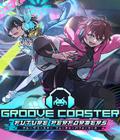
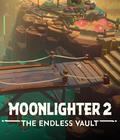
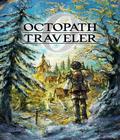
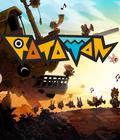
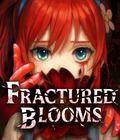

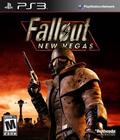 Fallout: New Vegas brings this beloved franchise to a location only Fallout could do justice: Vegas. Fallout: New Vegas takes all the action, humor, and post-apocalyptic grime and grit of this legendary series, and raises the stakes.
Fallout: New Vegas brings this beloved franchise to a location only Fallout could do justice: Vegas. Fallout: New Vegas takes all the action, humor, and post-apocalyptic grime and grit of this legendary series, and raises the stakes.





































